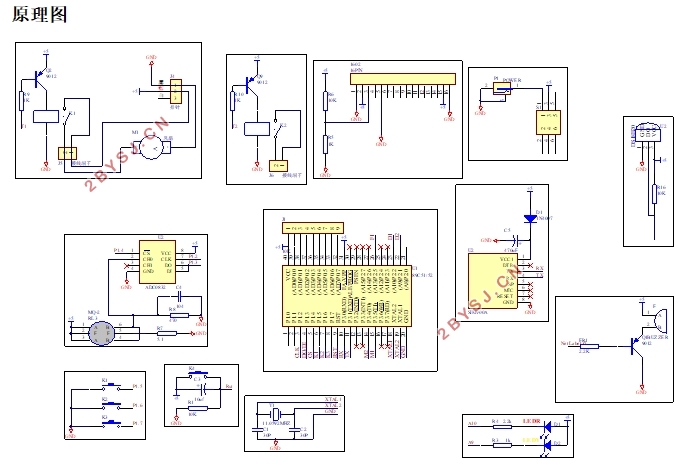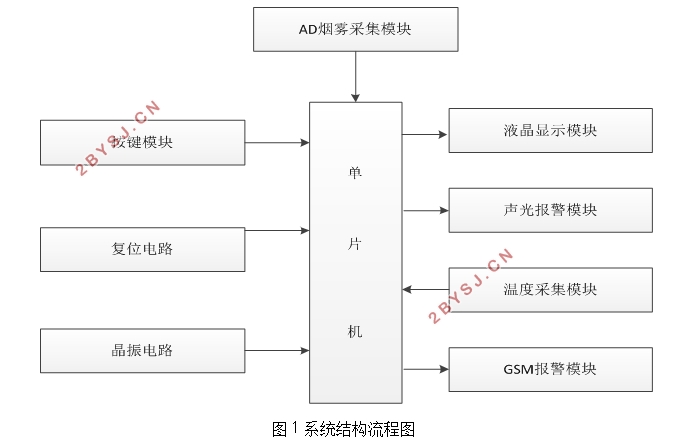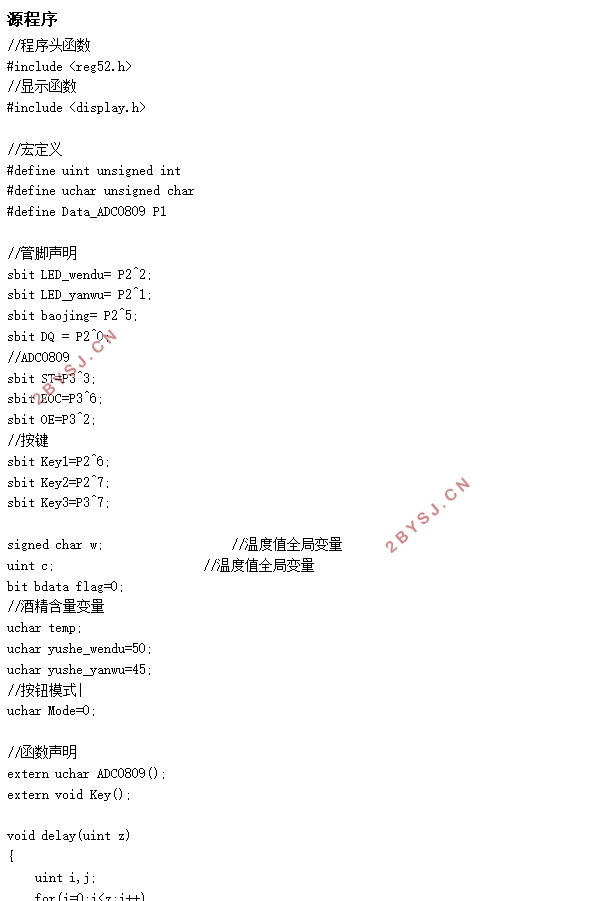多点GSM火情报警系统的设计
无需注册登录,支付后按照提示操作即可获取该资料.
多点GSM火情报警系统的设计(开题报告,论文10000字)
摘要
火灾是当前社会多发性毁灭性的灾害之一,对于火灾,早一点发现就能挽回大量的损失。是以,火灾报警器在日常生活中很重要。本文所研究的多点GSM火情报警器利用STC89C51为核心控制器,设计了一个单片机最小系统来进行初始化,通过气体传感器MQ-2测量当前环境烟雾值,通过温度传感器DS18B20测量当前环境温度,通过ADC0809模数转换器进行数模转换,利用SIM900芯片来实现远程GSM报警,最后通过STC89C51芯片编程控制执行相应的操作。通过这些传感器和芯片,当环境中可燃气体浓度或温度等发生变化时,传感器就会检测到,同时系统会发出相应的灯光报警信号和声音报警信号,并向用户发出报警短信以此来实现火灾报警,智能化提示。
关键词:气体传感器MQ-2;火灾报警;单片机;智能控制;
Multipoint GSM Fire Alarm System
Abstract
Fire is one of the current social devastating disasters, for the fire, a little early discovery will be able to save a lot of damage. Therefore, the fire alarm is very important in daily life. The design and research of GSM fire alarm uses STC89C51 as the core controller, a single-chip microcomputer minimum system is initialized, by gas sensor mq-2 measuring current environmental smoke values, the current ambient temperature by the measurement of the temperature sensor DS18B20, through ADC0809 analog to digital converter were digital to analog conversion, by SIM900 chip to realize remote GSM alarm, the STC89C51 chip programming control of the implementation of the relevant operation. Through these sensors and chips, when the environment in the combustible gas concentration and temperature change, sensor will be detected. At the same time, the system will send out corresponding light alarm signal and the sound alarm signal, and give an alarm to user message in order to realize the fire alarm, intelligent prompt.
Key words: MQ-2 gas sensor; fire alarm; MCU; intelligent control;



目录
摘要 I
Abstract II
目录 III
第一章 绪论 1
1.1 课题的研究背景 1
1.2 课题的研究内容 1
1.3论文内容安排 2
第二章 多点GSM火情报警器的总体方案设计 3
2.1系统的功能要求 3
2.2 系统的技术要求 3
2.3 系统的组成及方案设计 3
2.3.1 系统的组成 3
2.3.2设计方案 4
第三章 系统的硬件设计 7
3.1 主控电路 7
3.1.1 时钟电路 8
3.1.2 复位电路 8
3.2 烟雾探测电路和A/D转换电路的设计 9
3.2.1 ADC0832芯片介绍 9
3.2.2 MQ-2介绍 9
3.3 温度采集电路 11
3.4 电源电路 11
3.5 液晶显示电路设计 12
3.6 声光报警电路 13
3.6.1 灯光提示电路 13
3.6.2 声音报警电路 14
3.7 按键电路 14
3.8 GSM模块电路设计 15
3.9 消防模块 16
第四章 系统的软件设计 17
4.1 软件介绍 17
4.2 系统程序流程图 18
4.4 其他部分程序 22
第五章 火灾报警器的测试结果及结论 24
5.1 调试 24
5.2 小结 24
参考文献 26
附录 28
致谢 36
